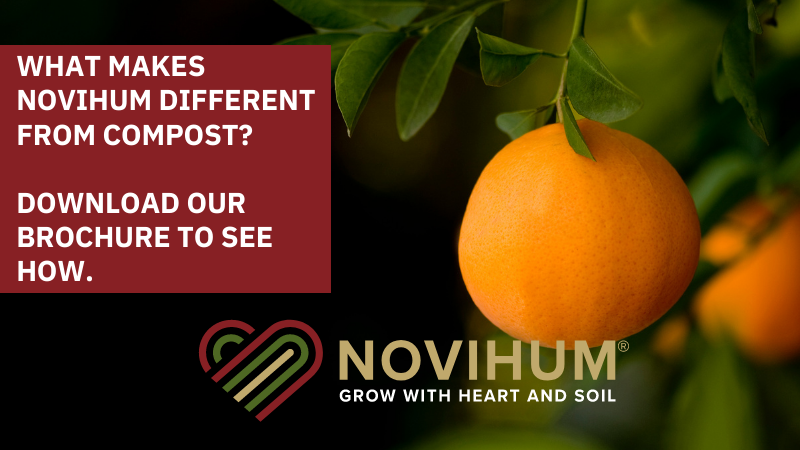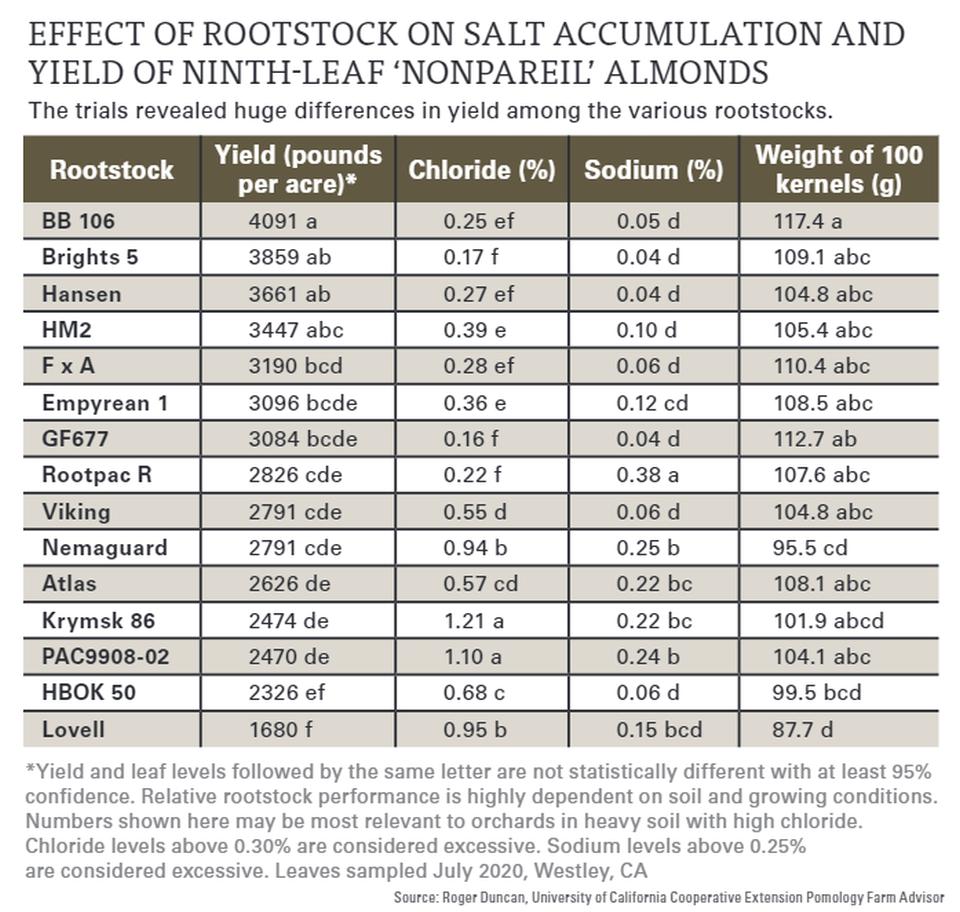How To Make Sure You’re Using the Right Almond Rootstock
Almond growers, like nearly all fruit and nut growers, have a laser-like focus when it comes to the varieties they plant; perhaps even more than other growers, as their flagship variety, ‘Nonpareil’, generally fetches a higher price than other varieties. That is all well and good, but Roger Duncan, a University of California Cooperative Extension Pomology Farm Advisor in Stanislaus County, wishes they would pay as much attention to what rootstocks they’re planting.
“Rootstock choice is often more important than the choice of variety,” he says. “Because if you have a problem in an orchard, you can use a rootstock to correct it, whereas the variety can affect matters just 10% at most. The rootstock can make or break an orchard.”
Duncan has been monitoring an almond rootstock trial he planted with the grower-cooperator Lee Del Don on the west side of the San Joaquin Valley near Westley in December 2012. They planted 16 different rootstocks — although yield data could only be obtained on 15 — of four basic types: peach rootstocks like Nemaguard, hybrids of peach almond such as Hansen 536, plum hybrids like Krymsk 86, and complex hybrids such as Viking. The variety in all cases was ‘Nonpareil’.
Duncan basically finished the trial this past season. He will continue to monitor the trees, in part because there is a lot of chloride in the soil in that part of the Central Valley, and he is interested to see how the rootstocks will fare in the long run. But he has completed basic intensive data collection, and what he found will come as a surprise to many growers.
For example, you do not need to look further than the bottom of the chart that lists the rootstocks to find Lovell, a popular selection that was widely planted not too long ago. It was the only one among the rootstocks that failed to achieve an average annual yield of 2,000 pounds per acre. Lovell came in at just 1,680 pounds per acre, which was less than half the five top performers in the trial.
“Rootstocks can increase yields, and when you multiply it out by two dollars a pound, you really see a bigger economic difference than could be achieved through variety selection,” Duncan says.
Simply put, Duncan says planting the wrong almond rootstock can lead to lower yields and increased expenses for corrective action. Unfortunately, many growers are reluctant to switch if they have had success with a certain rootstock. Or if they’re not sure, they will just go with the standard planted by other growers in their area.
But the standard almond rootstock might not be the best choice. Besides the example of Lovell, Duncan pointed to Nemaguard, which was a popular choice for Northern California growers until about five to 10 years ago. In the trial, Nemaguard’s yields were not only below average, finishing 10th, it produced small kernels, topping only Lovell in size. Smaller kernels are especially undesirable when producing a variety such as ‘Nonpareil’, which is often destined for snacking.
One other note on the chart above showing the value of rootstocks: Because the soils in the trial are high in chloride, Duncan paid particular attention to those levels. He was hoping to see levels below 0.3% because, if that is exceeded, tree growth will be inhibited.
“Only six cut the mustard, which is a real problem,” he says. “If it gets worse than that (0.3%), you eventually will get burning later in the summer, and, in fact, we were seeing leaf burn on those trees this summer.”










